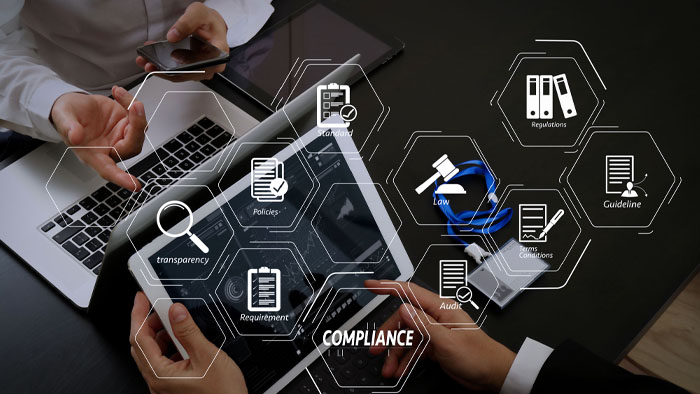
EU Leaders Agree on Digital Regulation Framework A New Era of Responsible Innovation
In a major policy breakthrough this week, leaders of the European Union reached a unified agreement on a landmark digital regulation framework designed to transform the bloc into a global standard setter in technology governance. This comprehensive framework, hailed as a strategic blend of innovation and regulation, will touch virtually every aspect of the digital ecosystem from artificial intelligence and data privacy to online platforms, competition, and cybersecurity. The agreement underscores the EU’s growing ambition to create a fair, open, and safe digital space, especially as new technologies increasingly impact daily life, politics, and economies across the continent.
At the heart of this new framework are three flagship legislations the Digital Services Act (DSA), the Digital Markets Act (DMA), and the Artificial Intelligence Act (AI Act). Together, these acts represent the most sweeping set of digital regulations ever attempted by any democratic bloc. The DSA aims to enforce transparency and accountability for content moderation and algorithmic decisions on large digital platforms. The DMA tackles anti competitive behavior by tech giants, especially those acting as gatekeepers in online markets. Meanwhile, the AI Act introduces a risk based classification system for artificial intelligence applications, banning the most harmful and tightly regulating those that could affect safety, fundamental rights, or access to essential services.
European Commission President Ursula von der Leyen described the agreement as “a critical step forward in defending European values in the digital age.” She emphasized that the framework is not about stifling innovation but guiding it. “We cannot allow technology to advance faster than our capacity to protect democracy, fairness, and the human rights of our citizens,” she stated in a press briefing following the agreement. The legislation now enters a coordinated implementation phase, with enforcement timelines set for the coming months.
One of the most impactful components of the framework is its focus on platform accountability. Under the DSA, very large online platforms (VLOPs) such as Meta, Google, Amazon, and TikTok will be obligated to assess and mitigate the risks of misinformation, hate speech, and algorithmic bias. These companies must also open their recommendation systems to scrutiny by independent auditors and allow researchers access to key platform data. Failure to comply could result in fines of up to 6% of a company’s global revenue. This represents a significant shift in the balance of power between regulators and Big Tech.
Similarly, the DMA places significant new constraints on dominant digital gatekeepers. Companies that control essential access points to online markets will no longer be allowed to self preference their own products, lock users into proprietary ecosystems, or unfairly limit interoperability with smaller competitors. For example, Apple may be forced to open up its App Store rules, while Google could face scrutiny for giving its own services preferential ranking. These measures are aimed at fostering greater competition and encouraging innovation from startups and SMEs, which have long struggled to gain fair access in digital markets dominated by a handful of giants.
The AI Act, the first law of its kind globally, introduces a bold approach to regulating artificial intelligence. It classifies AI systems into four categories unacceptable risk, high risk, limited risk, and minimal risk. Applications like social scoring, mass biometric surveillance, and manipulative algorithms fall under the “unacceptable” category and will be banned outright. Meanwhile, high risk systems such as those used in healthcare, transportation, and hiring will be subjected to strict oversight, including transparency requirements, human oversight, and mandatory testing before deployment. The law also includes provisions for open source AI and exemptions for research institutions, ensuring that academic innovation is not hindered.
Beyond regulating private companies, the new framework also emphasizes digital sovereignty the ability of the EU to assert control over its digital infrastructure, data flows, and technological standards. As part of this effort, the EU will invest in secure data centers, promote the development of a European cloud ecosystem, and encourage member states to harmonize their national cybersecurity laws. The creation of a European Digital Identity Wallet, which allows citizens to access public and private services across borders with a single secure login, is also a key initiative tied to this strategy. These moves are intended to reduce dependence on foreign tech providers and bolster public trust in digital systems.
One of the more controversial aspects of the regulation framework has been its stance on user privacy and targeted advertising. Under the revised ePrivacy rules, users will have greater control over their personal data, including the right to refuse tracking without being penalized with paywalls or reduced service access. Advertising models based on surveillance and profiling will be required to meet stringent consent requirements, and new enforcement mechanisms will be introduced to ensure compliance. These rules have drawn criticism from some digital advertisers and online publishers, but EU officials maintain that consumer protection must take precedence over commercial interests.
Despite broad political support, the implementation of the digital regulation framework will present significant challenges. Member states must build capacity in their national enforcement bodies, educate businesses on compliance obligations, and ensure that judicial systems are prepared to handle the inevitable legal disputes that will arise. The European Commission has promised to fund training programs, provide technical guidance, and establish a Digital Regulation Coordination Board to help member states navigate the transition. There is also growing discussion about creating a new European Digital Authority to oversee cross border enforcement and policy harmonization.
In conclusion, the EU’s agreement on the digital regulation framework represents a monumental achievement in modern policymaking. At a time when many democracies are struggling to rein in the power of global tech corporations, the European Union has managed to craft a balanced, forward looking, and enforceable set of laws that could serve as a global blueprint. While the road to full implementation will be complex and occasionally contentious, the framework reflects a collective European commitment to shaping the digital future in a way that prioritizes openness, accountability, innovation, and the protection of fundamental rights
Related Post
Popular News
Subscribe To Our Newsletter
No spam, notifications only about new products, updates.
















